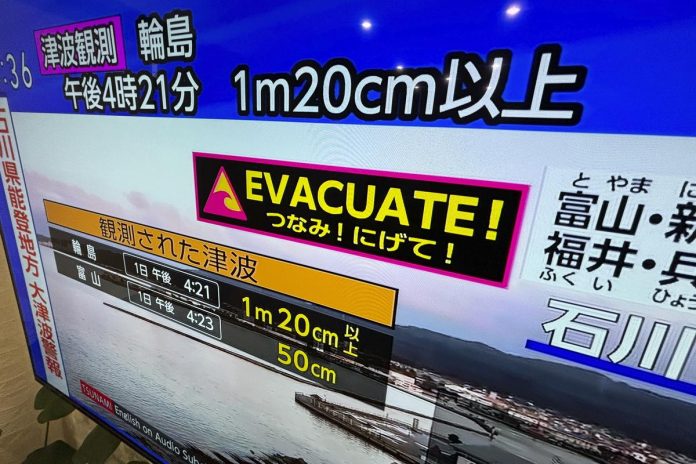Early Monday, Japan’s north-central region of Ishikawa was once again rocked by earthquakes, stirring memories of the devastating quake that struck on January 1st. The latest tremors, including a magnitude 5.9 quake at the northern tip of the Noto Peninsula followed by a 4.8 tremor and several smaller aftershocks, were reported by the Japan Meteorological Agency. Fortunately, there was no tsunami threat associated with these seismic events.
Although the earthquakes caused no major damage, five homes previously damaged in the January 1st quake collapsed in Wajima city. Thankfully, there were no reports of significant injuries or fatalities. However, a resident in her 60s sustained non-life-threatening injuries after falling from her bed due to a quake alarm in the town of Tsubata, located about 100 kilometers southwest of the epicenter.
Seismology and tsunami official Satoshi Harada confirmed that Monday’s earthquakes were likely aftershocks of the magnitude 7.6 earthquake that struck earlier in the year. While seismic activity has decreased slightly since January, Harada cautioned residents to remain vigilant, particularly in areas where buildings were previously damaged.
As a precautionary measure, Shinkansen super-express trains and other train services were briefly suspended for safety inspections, although most services resumed shortly after. Additionally, the Nuclear Regulation Authority reported no abnormalities at two nearby nuclear power plants, including the Shika plant on the Noto Peninsula, which sustained minor damage that did not affect cooling functions.
Despite the rattling tremors, there were no power outages reported by Hokuriku Electric Power Co. Nevertheless, the earthquakes reignited fear among residents still grappling with the aftermath of the New Year’s quake. Many individuals emerged from their homes and temporary shelters to assess potential damage, highlighting the lingering trauma and anxiety in affected communities.
Chief Cabinet Secretary Yoshimasa Hayashi urged caution against potential hazards such as falling rocks and landslides, particularly in areas heavily affected by the seismic activity. Reconstruction efforts in mountainous regions of the peninsula have been slow, with many damaged houses remaining untouched.
In Wajima, one of the worst-hit areas, an inn operator recounted his immediate response to the tremors, reflecting the enduring impact of the January quake. While no damage was reported during Monday’s earthquakes, the incident served as a stark reminder of the ongoing vulnerability of affected communities.
The January 1st quake resulted in significant loss of life, with 260 fatalities reported, along with additional deaths attributed to stress, illnesses, and other quake-related causes. Three individuals remain missing, and damages persist, with over 3,300 residents still displaced from their homes.
As Japan continues to grapple with the aftermath of these seismic events, the resilience and perseverance of affected communities remain evident. Despite the challenges, efforts to rebuild and recover are ongoing, underscoring the resilience of the human spirit in the face of adversity.























